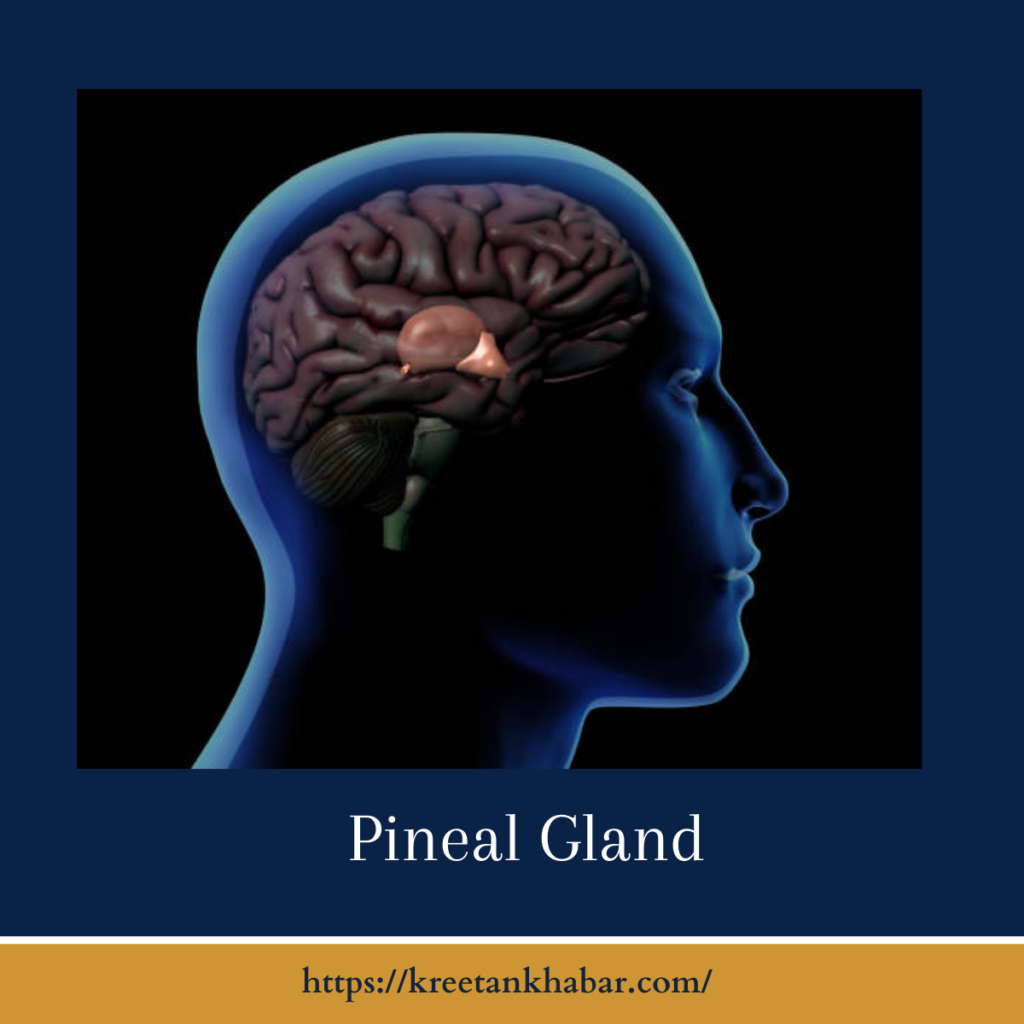Pineal Gland: Unraveling the Mysteries of the Body’s Inner Timekeeper
Introduction
Nestled deep within the brain, the pineal gland(also known as acinus) has long captivated scientists and mystics alike, earning its reputation as the “third eye” and the body’s inner timekeeper. Despite its small size, this tiny gland plays a significant role in regulating various physiological processes and has been shrouded in mystery throughout history. In this exploration, we delve into the fascinating world of the acinus, examining its structure, functions, and the enigmatic role it plays in the intricate dance of hormones and circadian rhythms.

Anatomy and Location
The pineal gland, also known as the pineal body or epiphysis, is a pinecone-shaped structure situated deep within the brain, between the two hemispheres. Despite its minute size, measuring only a few millimeters, the acinus is rich in blood vessels, reflecting its high metabolic activity. This unassuming gland is pivotal in the intricate web of connections that regulate our body’s internal clock and respond to environmental cues.
- Deep Brain Dweller: The pineal gland, also known as the pineal body or epiphysis, is situated deep within the brain. Its location is precisely between the two hemispheres in a small, pinecone-shaped structure.
- Size and Structure: Despite its tiny dimensions, measuring only a few millimeters, the acinus is notable for its unique structure. Rich in blood vessels, it reflects a high level of metabolic activity despite its small size.
- Protected Sanctuary: The acinus is strategically sheltered within the brain, positioned within a protected space that shields it from external influences. This protected location underscores the gland’s sensitivity to internal signals and environmental cues.
- Connection to the Third Ventricle: Anatomically, the acinus is linked to the third ventricle of the brain. This intricate connection facilitates communication with other brain structures and ensures the proper functioning of the gland in response to various stimuli.
- Calcification with Age: Over time, the acinus can undergo calcification, a natural process where calcium deposits accumulate. This phenomenon is often observed as people age and may influence the pineal gland’s functionality.
- Circadian Rhythm Hub: Positioned strategically within the brain, the acinus serves as a key player in the regulation of the circadian rhythm. Its location enables it to receive signals related to light and darkness, allowing it to orchestrate the body’s internal clock.
- Innervation and Blood Supply: The acinus receives innervation from the sympathetic nervous system, emphasizing its connection to the body’s stress responses. Additionally, it is supplied with blood through a network of vessels, highlighting its metabolic activity.
- Production Site of Melatonin: The acinus is the primary site for the synthesis and secretion of melatonin, a hormone crucial in regulating the sleep-wake cycle. This production is highly influenced by the amount of light exposure, with increased melatonin production in response to darkness.
- Functional Harmony with Endocrine System: In its secluded abode, the acinus harmonizes with the endocrine system, influencing the release of hormones such as cortisol and serotonin. This intricate interplay reflects the gland’s broader role in maintaining physiological balance.
- Interdisciplinary Interest: Beyond its physiological functions, the anatomy and location of the acinus have spurred interdisciplinary interest. Its association with spiritual and mystical experiences has prompted exploration not only in neuroscience but also in philosophy, psychology, and metaphysics.
Melatonin Production
One of the primary functions of the pineal gland is the synthesis and secretion of melatonin, often referred to as the “sleep hormone.” Melatonin plays a crucial role in regulating the sleep-wake cycle, responding to changes in light and darkness. As daylight diminishes, the pineal gland ramps up melatonin production, inducing a sense of drowsiness and preparing the body for a restful night’s sleep.
The Pineal Gland as a Biological Clock
Beyond its role in sleep regulation, the pineal gland acts as a biological clock, helping synchronize various physiological processes with the natural rhythms of day and night. This internal timekeeper is closely tied to the body’s endocrine system, influencing the release of hormones such as cortisol, which governs stress responses, and serotonin, a neurotransmitter associated with mood.
Spiritual and Mystical Significance
The pineal gland’s association with spiritual and mystical experiences has fueled its mystique throughout history. Some cultures and belief systems regard the pineal gland as the seat of the soul, connecting individuals to higher states of consciousness. This perspective is not only rooted in ancient spiritual traditions but also in modern scientific discourse exploring the gland’s potential role in altered states of consciousness.
Scientific Advancements and Ongoing Research
Advancements in neuroscience and medical imaging have allowed scientists to unravel the pineal gland’s secrets, mapping its connections and shedding light on its intricate functions. Ongoing research continues to explore the pineal gland’s involvement in circadian rhythms, mood regulation, and its potential links to conditions such as seasonal affective disorder (SAD) and sleep disorders.
Conclusion
As science continues to peel back the layers of mystery surrounding the pineal gland, its significance in our physiological and spiritual experiences becomes increasingly apparent. From regulating sleep patterns to influencing mood and potentially connecting us to realms of higher consciousness, the pineal gland remains an enigmatic and awe-inspiring component of the human body. Whether viewed through the lens of science or spirituality, the pineal gland stands as a testament to the marvels of human biology and the continuing quest to understand the intricacies of our inner universe.
Read also : Exploring the Delightful Boost of the Green Tea Shot 2023